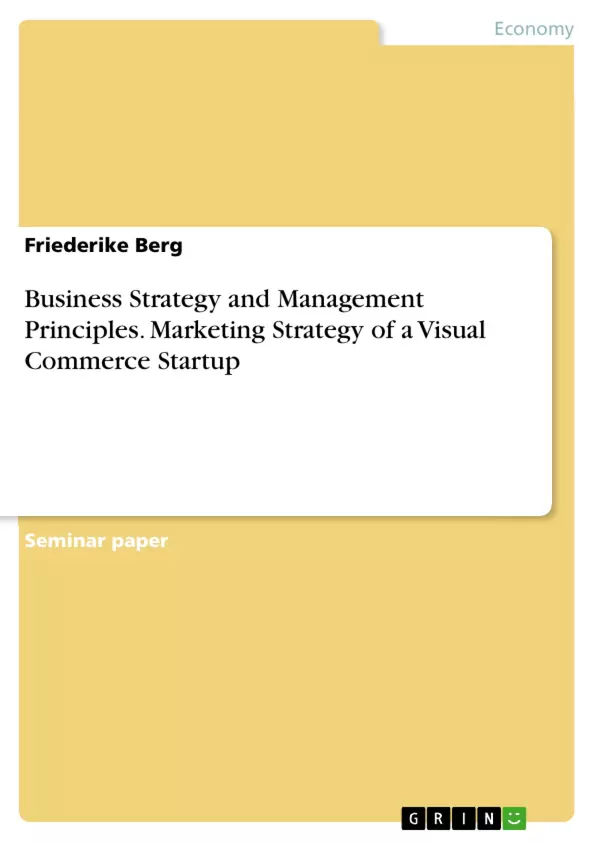This paper gives an executive summary and a generated marketing strategy of the visual commerce startup that is called Virtual Glutton (VG). The executive summary incorporates a brief overview of the company, its legal structure, its target market, its business model, its human resources, its marketing and sales, its financial summary, its technology as well as its research and development (R&D). It is initiated to use as a pitch deck. The research about the marketing strategy describes instruments using the example of Virtual Glutton to explain how to build a superior strategy and how to increase the number of customers.
Inhaltsverzeichnis (Table of Contents)
- Abstract
- List of Abbreviations
- Introduction
- Chapter 1 - Executive Summary
- Company Description
- Legal Structure, Regulations, and Intellectual Property Rights
- Target Market and Competition
- Strategy Business Model
- Customers
- Product and Services
- Pricing
- Competitive Advantage
- Growth Strategy
- Human Resources
- Marketing and Sales
- Financial Summary
- Research & Development and Technology
- Chapter 2 - Marketing Research Paper
- Problem
- Social Media Marketing
- Influencer Marketing
- Event Marketing
- Search Engine Marketing
- Email Marketing
- References
- Bibliography
Zielsetzung und Themenschwerpunkte (Objectives and Key Themes)
This paper presents an executive summary and marketing strategy for the visual commerce startup Virtual Glutton (VG). The executive summary provides an overview of the company's structure, target market, business model, human resources, marketing and sales, financial summary, technology, and research and development (R&D). The research on the marketing strategy delves into various instruments, using the example of Virtual Glutton to explain how to build a superior strategy and increase customer base.
- Visual Commerce Startup
- Marketing Strategy Development
- Customer Data Analysis from Social Media
- Building a Superior Marketing Strategy
- Increasing Customer Base
Zusammenfassung der Kapitel (Chapter Summaries)
The paper begins with an executive summary of Virtual Glutton (VG), a visual commerce company utilizing social media data to create a customer impact. It details VG's history, structure, target market, business model, financial situation, and research and development activities. Chapter 2 focuses on the marketing research paper, exploring various instruments like social media marketing, influencer marketing, event marketing, search engine marketing, and email marketing to explain how to effectively build a superior strategy and increase customer base.
Schlüsselwörter (Keywords)
The main keywords and focus topics of the text are: Virtual Glutton, visual commerce, marketing, customer data analysis, social media, influencer marketing, event marketing, search engine marketing, email marketing, business strategy, marketing strategy, and customer base growth.
- Quote paper
- Friederike Berg (Author), 2018, Business Strategy and Management Principles. Marketing Strategy of a Visual Commerce Startup, Munich, GRIN Verlag, https://www.grin.com/document/505670



